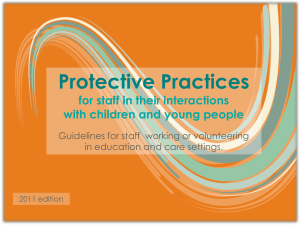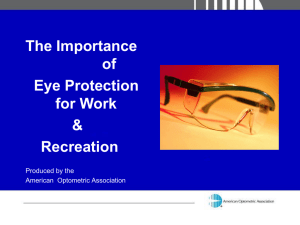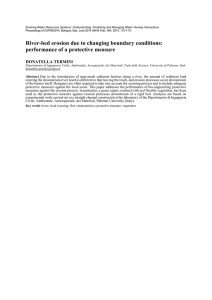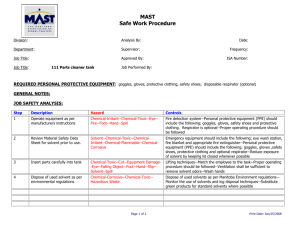Gardener
advertisement
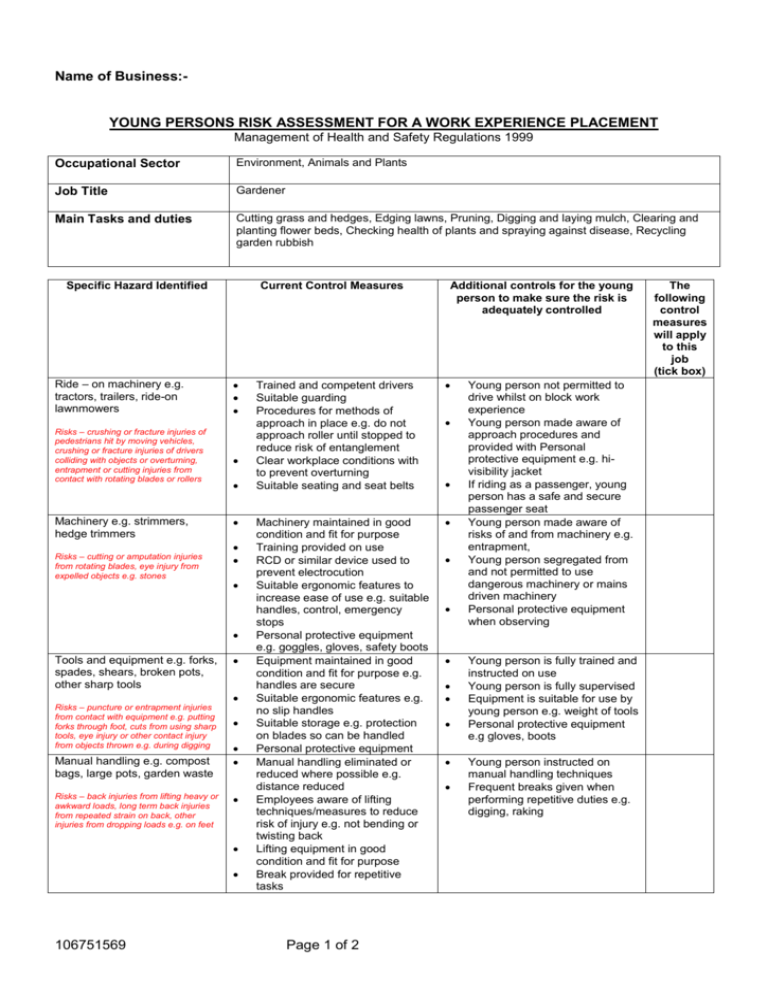
Name of Business:- YOUNG PERSONS RISK ASSESSMENT FOR A WORK EXPERIENCE PLACEMENT Management of Health and Safety Regulations 1999 Occupational Sector Environment, Animals and Plants Job Title Gardener Main Tasks and duties Cutting grass and hedges, Edging lawns, Pruning, Digging and laying mulch, Clearing and planting flower beds, Checking health of plants and spraying against disease, Recycling garden rubbish Specific Hazard Identified Ride – on machinery e.g. tractors, trailers, ride-on lawnmowers Risks – crushing or fracture injuries of pedestrians hit by moving vehicles, crushing or fracture injuries of drivers colliding with objects or overturning, entrapment or cutting injuries from contact with rotating blades or rollers Machinery e.g. strimmers, hedge trimmers Risks – cutting or amputation injuries from rotating blades, eye injury from expelled objects e.g. stones Current Control Measures Tools and equipment e.g. forks, spades, shears, broken pots, other sharp tools Risks – puncture or entrapment injuries from contact with equipment e.g. putting forks through foot, cuts from using sharp tools, eye injury or other contact injury from objects thrown e.g. during digging Manual handling e.g. compost bags, large pots, garden waste Risks – back injuries from lifting heavy or awkward loads, long term back injuries from repeated strain on back, other injuries from dropping loads e.g. on feet 106751569 Additional controls for the young person to make sure the risk is adequately controlled Trained and competent drivers Suitable guarding Procedures for methods of approach in place e.g. do not approach roller until stopped to reduce risk of entanglement Clear workplace conditions with to prevent overturning Suitable seating and seat belts Machinery maintained in good condition and fit for purpose Training provided on use RCD or similar device used to prevent electrocution Suitable ergonomic features to increase ease of use e.g. suitable handles, control, emergency stops Personal protective equipment e.g. goggles, gloves, safety boots Equipment maintained in good condition and fit for purpose e.g. handles are secure Suitable ergonomic features e.g. no slip handles Suitable storage e.g. protection on blades so can be handled Personal protective equipment Manual handling eliminated or reduced where possible e.g. distance reduced Employees aware of lifting techniques/measures to reduce risk of injury e.g. not bending or twisting back Lifting equipment in good condition and fit for purpose Break provided for repetitive tasks Page 1 of 2 Young person not permitted to drive whilst on block work experience Young person made aware of approach procedures and provided with Personal protective equipment e.g. hivisibility jacket If riding as a passenger, young person has a safe and secure passenger seat Young person made aware of risks of and from machinery e.g. entrapment, Young person segregated from and not permitted to use dangerous machinery or mains driven machinery Personal protective equipment when observing Young person is fully trained and instructed on use Young person is fully supervised Equipment is suitable for use by young person e.g. weight of tools Personal protective equipment e.g gloves, boots Young person instructed on manual handling techniques Frequent breaks given when performing repetitive duties e.g. digging, raking The following control measures will apply to this job (tick box) Chemicals e.g. pesticides, insecticides Risks – skin or respiratory damage from contact with strong acids or alkalis, damage to eyes from chemicals, poisoning Biological agents e.g. poisonous plants, insects, vermin, snakes, tetanus Risks – Allergic reaction from contact with agents, infection through cuts or grazes, poisoning from eating food with contaminated hands Working at height e.g. working on ladders, high banks, structures Risks – fracture injuries from falling from height or other injuries from collapse of equipment e.g. cuts, bruises Water e.g. ponds, water features, pools, wells Risks – Drowning, slippery areas, high pressure water Weather e.g. hot weather, heavy rain, cold weather Risks – Illness, dehydration, sun stroke, sun burn Noise/ Vibration e.g. working near mechanised equipment Risks – Hearing loss, White finger, Reduced dexterity All chemicals e.g. pesticides, fertiliser appropriately labelled and stored Restricted access to chemicals Chemicals used under controlled conditions and using appropriate equipment Provision and use of personal protective equipment Advice given on appropriate hygiene and risks of biological agents so can inform doctor should symptoms occur Hygiene facilities including toilets and somewhere to eat provided Provision of personal protective equipment e.g. gloves Special consideration of those with medical conditions e.g. hayfever and insect allergies Ladders, scaffolding, platforms secured and braced where appropriate and located on suitable surface Equipment used is fit for purpose e.g. will support load Handrails, harnesses provided Personal protective equipment e.g. hard hat Employees aware of location of water hazards Pressure relief systems used where appropriate Personal protective equipment e.g. suitable footwear Employees aware of risks e.g. sunburn, cold/hot weather Personal protective equipment e.g. waterproofs, Wellingtons Noise/ vibration level from machinery known and displayed Limited use times for machinery communicated to employees or machinery has ‘cut off’ Personal protective equipment e.g. ear defenders Health surveillance system in operation e.g. hearing tests Young person instructed on chemical hazards Young person not permitted to use or handle hazardous chemicals e.g. pesticides, solvents Young person segregated from large-scale spraying Young person instructed on appropriate hygiene measures Young person given advice on risks of biological agents or from animals Special considerations including reduced exposure for those with medical conditions e.g. hayfever and insect allergies Young person does not work above 2m and does not use sharp tools when working at height Personal protective equipment provided Young person warned on sites with specific hazards and segregated from hazardous areas e.g. deep pools, wells Young persons instructed on need for protection against elements especially when working outdoors e.g. sunscreen Young person warned of risks from noise and vibration and precautions in place e.g. machinery requiring ear defenders to be worn Personal protective equipment worn during observation tasks Limited/ minimal use of vibrating equipment Young persons risk assessment completed by:- _______________________ Date:- __________ Name of student:- ___________________________________________________________________ Copy of risk assessment sent to:- ____________________________________ Date:- __________ A copy of the risk assessment will be sent to the parents via the school/college 106751569 Page 2 of 2

